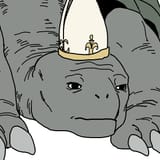Search Results
7/17/2025, 7:15:18 AM
>>715685118
>>715685118
>>715685118
>The lore is nonsensical, anon. That's why no one can even agree on what the lore IS
Nah, that's just an indictment of the average level of education or IQ amongst people who attempt it.
Anyways I stopped reading there so.... Get fucked lol.
>>715685118
>>715685118
>The lore is nonsensical, anon. That's why no one can even agree on what the lore IS
Nah, that's just an indictment of the average level of education or IQ amongst people who attempt it.
Anyways I stopped reading there so.... Get fucked lol.
6/18/2025, 9:04:57 AM
>>527858157
>>527858754
>In Gnosticism, the Monad—often understood as the ultimate, singular, and perfect divine source—does not directly "fracture" itself in the sense of breaking apart intentionally. Instead, the process of fragmentation or emanation is a complex metaphysical event that leads to the creation of the cosmos and the material world. Here's a concise explanation based on Gnostic teachings: The Monad, as the supreme, ineffable God, exists in perfect unity and transcendence within the Pleroma (the divine fullness). According to texts like those found in the Nag Hammadi library (e.g., Apocryphon of John or Valentinian Exposition), the Monad emanates divine beings called Aeons to express its infinite qualities. These emanations are not a fracture but a controlled extension of divine essence, each Aeon reflecting aspects of the Monad’s perfection. However, the "fracture" or disruption occurs with the Aeon Sophia (Wisdom). In some Gnostic myths, Sophia, acting without her divine counterpart, attempts to create or emanate independently, resulting in an unintended, defective offspring—the Demiurge (often identified as Yaldabaoth). This Demiurge, ignorant of the Monad’s true nature, creates the material world, trapping divine sparks (human souls) within it. This event is the closest to a "fracture" in Gnostic cosmology, though it’s not the Monad itself breaking but a cascading error within the Pleroma’s emanations. Why does this happen? Gnostic texts suggest: Sophia’s act reflects a desire for knowledge or creation, symbolizing a divine impulse to explore or manifest independently. The fracture serves a narrative purpose: it explains the flawed material world and humanity’s divine spark, which must awaken to return to the Monad. The Monad allows this to unfold as part of a cosmic plan for self-revelation or redemption, though it remains unblemished and transcendent.
>>527858754
>In Gnosticism, the Monad—often understood as the ultimate, singular, and perfect divine source—does not directly "fracture" itself in the sense of breaking apart intentionally. Instead, the process of fragmentation or emanation is a complex metaphysical event that leads to the creation of the cosmos and the material world. Here's a concise explanation based on Gnostic teachings: The Monad, as the supreme, ineffable God, exists in perfect unity and transcendence within the Pleroma (the divine fullness). According to texts like those found in the Nag Hammadi library (e.g., Apocryphon of John or Valentinian Exposition), the Monad emanates divine beings called Aeons to express its infinite qualities. These emanations are not a fracture but a controlled extension of divine essence, each Aeon reflecting aspects of the Monad’s perfection. However, the "fracture" or disruption occurs with the Aeon Sophia (Wisdom). In some Gnostic myths, Sophia, acting without her divine counterpart, attempts to create or emanate independently, resulting in an unintended, defective offspring—the Demiurge (often identified as Yaldabaoth). This Demiurge, ignorant of the Monad’s true nature, creates the material world, trapping divine sparks (human souls) within it. This event is the closest to a "fracture" in Gnostic cosmology, though it’s not the Monad itself breaking but a cascading error within the Pleroma’s emanations. Why does this happen? Gnostic texts suggest: Sophia’s act reflects a desire for knowledge or creation, symbolizing a divine impulse to explore or manifest independently. The fracture serves a narrative purpose: it explains the flawed material world and humanity’s divine spark, which must awaken to return to the Monad. The Monad allows this to unfold as part of a cosmic plan for self-revelation or redemption, though it remains unblemished and transcendent.
Page 1

